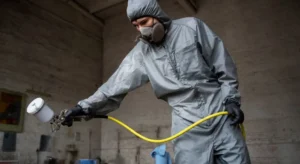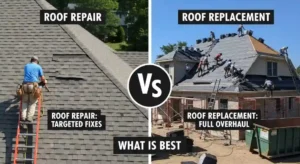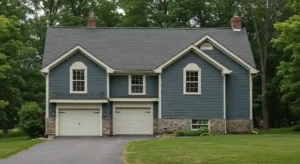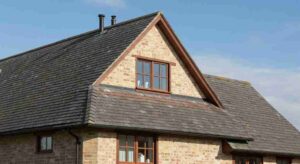Discover the complete roofing buyer’s guide. Learn about roof types, costs, materials & tips to choose the best roofing solution for your home. The roof is the most essential building block in shielding a structure from the weather. It is mission-critical spending that maintains the long-term viability and property value of your asset. Based on yourself in the whirlpool of material choices, struggling with factors beyond your control, with costs, and properly screening contractors typically seems to be an insurmountable task for homeowners.
This Roofing Buyer’s Guide is a complete, research-driven resource that gives you the information you need to finish the entire process professionally, reduce the risk of financial loss, and facilitate the installation of a strong, high-performance system.
Why Your Roof Matters
A roof is more than an overlay of shingles; it is a comprehensive system made up of decking, underlayment, ventilation, and flashing. Learning about the system is the initial step. Repair or full replacement, preparation is the key to keeping costs in check and ensuring quality.
Major Components and Project Scope
A modern roof is an integrated, multilayered protective system that goes far beyond what is visible on top. The scope of work to achieve this, therefore, needs to include a forensic examination of all the support elements, including the roof deck foundation, significant moisture management layers, and seals around all penetrations.
A thorough comprehension of the interdependence of these critical components, i.e., flashing, high velocity ventilation, and underlayment, is needed for accurate evaluation of the entire project scope, development of realistic performance expectations, and long-term sustainability of the building as a whole.
Stage 1: Diagnosis and Decision Making
The failure of a roof is rarely instantaneous and sudden. Careful observation of minor signals will prevent fatal damage and expensive crisis repairs.
Signs You Need a New Roof Now
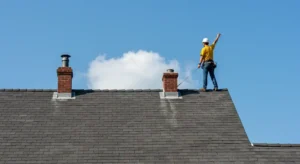
A professional evaluation is necessary, but homeowners must keep in mind these telling indications that system integrity is at risk:
- Missing or Broken Shingles: Wind loss or age-cracked shingles decrease short-term water shedding integrity.
- Granule Loss: Bald patches or shiny spots where protective granules have been worn off leave the asphalt exposed to damaging UV radiation and more degradation.
- Water Stains in the Attic: When stains or moisture migration are detected at the bottom of the decking, a leak must have penetrated the system and must be investigated right away.
- Sagging Decking: It is a structural issue and is usually caused by long-term moisture absorption or poor support, and prompt action has to be taken to avoid structural collapse.
- Age: The economic lifespan of the majority of average common asphalt shingles is typically 20 to 25 years. Though your roof is approaching its life expectancy, preparation for replacement is prudent, even if the visible damage is minimal.
If you have reason to suspect serious issues with recent weather events, you should have a good idea of what to look for. For a general visual inspection specific to storm damage, please see our article on roof replacement signs.
Fix or Replace? How to Make the Decision
Most challenging is whether the system must be replaced outright. The decision must be made on the basis of the age and condition of the system, not the cost of a patch job. When dealing with localized damage (e.g., patches of missing shingles, small flashing leaks), the preferred action is repair, typically when the age of the roof is early to mid-life (e.g., 5 to 15 years).
For widespread damage (e.g., 25% or more of the roof is damaged, large areas of lost granules), the preferred action is replacement, which is common during the mid- to late life (e.g., 15 to 25 years) of the roof. Finally, for Old Age/System Failure (where structural members are in disrepair and ventilation is substandard), the preferred action is Replacement, as the roof is Beyond Economic Life (e.g., 20+ years).
As a rule of thumb, if damage is more than 25% of the roof surface area or the roof is past its half-life span, a total replacement is more economical in the long run and safer. To see the entire comparison between longevity, cost-effectiveness, and amount needed, see our full research on repair versus replacement.
DIY Roof Inspection Checklist
Before you ever hire a professional, a safe initial check can serve to find areas of concern and aid in negotiating with contractors. Start at the ground level by looking for clumps of granules around downspouts (a great gauge of age) and checking for missing shingles at edges and valleys.
Next, move to the attic to check for water spots, dripping water, or sun shining through the roof decking, remembering to check around chimneys and vents since leaks usually begin there. Finally, inspect the chimney/vents for deteriorated caulking or cracked flashing around penetrations. Never climb a steep or unstable roof; ground-level viewing is all that preliminary observation requires.
Stage 2: Choosing Proper Roofing Materials
The material you choose makes all the difference: cost, look, durability, and energy efficiency. A decision must then be made considering the desired life and environmental impact.
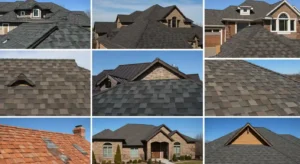
Material Comparison: Lifespan and ROI
The following table compares common roofing materials, emphasizing the compromise of cost versus performance lifespan.
| Material | Average Lifespan | Avg. Installed Cost | Key Benefit |
| Asphalt Shingle | 20–30 years | Low | Cheapest, most versatile, and widespread |
| Metal Roofing | 40–70 years | Moderate to High | Better durability, energy efficiency, and strong ROI |
| Tile (Clay/Concrete) | 50–100 years | High | Excellent fire resistance, high-end aesthetic appeal |
| Slate | 75–150 years | High-end | Undisputed longevity and age-worn character |
The Best Materials for Your Climate
Your geographical location and local weather patterns have a significant impact on material choices. A roof for a snowy climate requires different specifications than one for a wet, coastal climate.
In hot, sunny areas, use highly reflective surfaces. Light-colored clay/concrete roof tiles and reflective-coated metal roofs are excellent in reflecting UV radiation and reducing heat transmission to the attic.
Cold and snowy climates: High-end, heavy-duty asphalt shingles or standing seam metal are ideal choices. Metal is excellent at enabling snow to slide off easily, reducing the probability of ice dams developing.
High Wind/Hurricane Zones: Interlocking metal-type metal panels or Class 4 asphalt hail shingles provide maximum uplift resistance and hail protection.
To choose a material with a proven history for surviving regional weather conditions, please see our guide to regional material performance. Furthermore, although metal roofs are naturally best suited for weather longevity, the quality of their installation is also required in order to optimize their lifespan, as detailed in any quality installation guides.
Our Metal roof installation guide provides further clarity on the process, performance expectations, and maintenance considerations.
The Full Roofing System
Keep in mind that the outside covering is half the investment. Your contractor should also handle the underlayment (synthetic is much better than felt when it comes to water resistance), flashing (around chimneys and vents, which are there to keep rain out), and the ventilation system (intake and exhaust vents to prevent heat and moisture buildup and rot from the inside out). The entire system replacement will provide maximum performance and warranty coverage.
Phase 3: Roofing Replacement Cost & Budgeting
Budgeting involves a truthful estimation of cost drivers, which allows homeowners to regulate their outlay expenses in the right manner and acquire budget-friendly coverage.
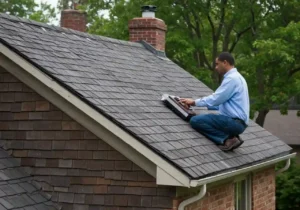
Key Factors Influencing Roofing Costs
These 6 drivers establish the eventual cost of a roof operation:
- Material Selection: The simplest of variables, where the cost is directly proportional to durability, life expectancy, and beauty.
- Roof Size & Pitch: Larger, steeper, and more complex roofs (with multiple dormers, hips, and valleys) take more expertise, time, and equipment, making for a larger total cost.
- Removal Complexity (Tear Off): Removing and disposing of several layers of older roofing or more complex materials takes extensive labor and disposal fees (usually known as dump fees).
- Decking repair: Any unforeseen damage to the plywood or wood sheathing (resulting from past leaks) will need to be repaired before the new roof installation, at an additional contingency cost.
- Access: Difficult-to-reach roofs (e.g., high-rise homes or homes having difficult-to-reach to reach landscaping) incur setup and labor time due to logistical difficulty.
- Labor & Permits: Local labor expenses, regulatory environments, and permit costs vary significantly by location and are an element in what drives the ultimate price point.
Average Roof Replacements
The overall cost to replace a complete roof is very sensitive and will be based only on the above. Typically, homeowners can anticipate a substantive capital expenditure, with costs tending to occur at Standard, Mid Range, and Premium material levels.
Standard Materials (e.g., generic three-tab asphalt) are the cheapest option, great for getting the most bang for your buck. Mid-range materials (e.g., architectural shingles, bare metal) offer the optimum combination of quality, appeal, and affordability.
Premium Materials (e.g., slate, tile, high-gauge copper)are the most costly choice due to superior longevity, a patented installation procedure, and maximum visual appeal.
For the most up-to-date price ranges and an overall cost breakdown by material and location, consult our full Roofing Cost Guide, which includes a comprehensive overview of material possibilities, labor variables, and budgeting advice for homeowners.
Warranties and Insurance
Securing your investment requires knowledge of the two basic layers of protection offered after installation:
Manufacturer’s Warranty
This covers defects in the material itself (e.g., shingles curled too soon). These are typically 20 years to lifetime, and will typically have very specific installation terms that the contractor will be required to follow.
Workmanship Warranty
Provided by the contractor, this protects against errors or failures during the installation process. A conscientious professional will provide a comprehensive warranty, typically 5 to 10 years on labor.
Most homeowner policies will replace the roof only if it is damaged by an unexpected, instantaneous loss, like fire or a storm (hail or wind). They do not cover wear and tear through ageing or deterioration.
Step 4: Screening and Hiring a Professional Contractor
Your project’s success is solely based on the quality and integrity of the professional contractor you choose. Planning is important.

Licensing & Insurance: Why They Are Indispensable
Your investment protection begins with the hiring of a licensed and insured professional. They do not add protection benefits; they are risk management tools:
General Liability Insurance
It covers your property if the contractor happens to damage it during work (e.g., leveling, landscaping, or destroying the neighbor’s house).
Workers Compensation Insurance
It covers the roofing team if they are injured on your property. If not, the homeowner could be liable for their medical expenses.
Licensing
It ensures the contractor has passed the required trade experience and business law examinations (if necessary in the applicable jurisdictions) and has the required financial and experience levels, making them professionally qualified.
Ensure Your Roofer Is Licensed (State Guide)
Contractor regulation and licensing vary widely throughout the states. While immense experience, testing, and high bonding or insurance requirements exist in some areas, others necessitate mere registration.
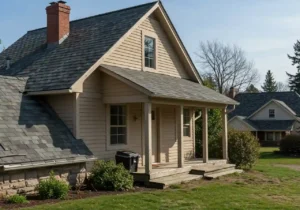
Ensure your chosen professional is lawfully qualified to trade within your state by referring to our licensing requirements. Even where the licensing of specific roofing work is not required, a contractor should always be properly and sufficiently insured.
The Top 10 Questions to Ask Your Roofer
Utilize these questions to provide quotes, assess professionalism, and ensure compliance with industry best practices:
- Do you have the necessary licensure, bonding, and full general liability and workers’ compensation insurance coverage?
- Are you removing the old system completely or overlaying?
- What underlayment and ventilation system would you suggest, and why?
- What is the daily cleanup procedure, and who is performing the disposal of the debris?
- Who is the on-site full-time project supervisor throughout the duration of the project?
- Do you use subcontractors, and if so, are they legally insured as well?
- What are your estimated start and completion dates for the scope of work defined?
- What are the payment terms (e.g., deposit amount, when do we make the final payment)?
- How long is your warranty on your work, and what’s not covered?
- Can you provide me with three local references for work completed in the last 12 months?
Conclusion
The key to a successful project is moving forward with confidence and complete information. To formalize the process and complete your due diligence, always obtain multiple quotes. This involves getting at least three detailed, written quotes from different licensed professionals that specify identical materials and scope of work.
Before signing any agreement, Verify Credentials by checking licenses and requesting current insurance certificates (not photocopies). Finally, Review Warranties to ensure you fully understand both the manufacturer and workmanship terms, paying close attention to any conditions that might void coverage.
FAQs
How long does a typical roof replacement take?
Most residential roof replacement usually takes one to three days, depending on roof size, pitch, and complexity level, except in adverse weather conditions.
May I place new shingles over old shingles?
Yes, the “overlay” or “re-roof” is, technically speaking, possible if you do only have a single layer as of now; yet, an entire “tear off” is always professionally recommended for further warranty protection and proper detection of hidden deck damage.
What is a “roofing square”?
Roofing square is the trade measure of 100 square feet (10ft×10ft) so that contractors can calculate materials and provide standard prices.
Will a new roof increase my home’s value?
Yes, a new roof generally provides a high return on investment (ROI), recovering most of the investment in increased home value and resale curb appeal.
What is the best season to roof?
While roofing can be done at any season, spring and fall are typically best because moderate weather favors the superior sticking strength of materials and optimal working conditions.

